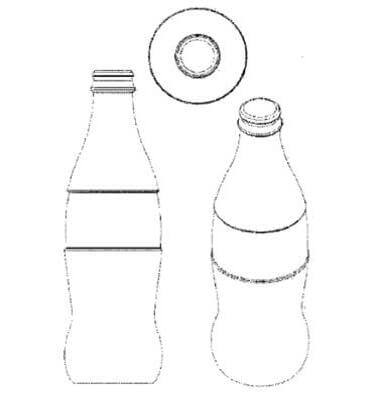
Trade mark protection for product packaging remains a hot topic
Coca-Cola’s recent efforts before the General Court to obtain a trade mark in relation to a simpler version of their famous Coca-Cola bottle provides a good example of the challenges associated with trade mark protection of product packaging.
According to the General Court, when proving acquired distinctiveness through use, evidence covering the entire EU or significant parts of the relevant public must be provided. The General Court (the ‘Court’) was asked to consider whether this bottle could be registered as a trade mark:

In deciding that it was not a valid mark (Case T-411/14), the Court upheld OHIM’s (now EUIPO) earlier decision to refuse Coca-Cola’s application.
The core question before the Court was whether or not the bottle shape in question had distinctive character, i.e. would a consumer consider the potential trade mark to be an indication of origin? In the eyes of the judges the bottle was neither inherently distinctive nor had it acquired distinctiveness through use, as Coca-Cola had argued.
The Court noted that the average consumer would only recognise the bottle as an indication of origin if its shape differed significantly from the norm in the product sector. After undertaking an analysis of each part of the bottle shape, the Court found that none of the parts in themselves were sufficiently different from the norm.
Moreover, the ‘normality’ of each part of the bottle led the Court to conclude that the overall shape of the bottle must also be unable to constitute a sufficient deviation from the norm and was therefore lacking in inherent distinctive character.
The Court then looked at whether this lack of inherent distinctiveness had been overcome by acquired distinctiveness through use of the sign. Coca-Cola had submitted surveys carried out in ten EU member states proving the distinctive character in those countries. However according to the Court this was not enough.
Rather, the Court found that where product packaging lacks inherent distinctive character, acquired distinctiveness through use has to be proven throughout the entire EU or for a significant part of the relevant public. Although Coca-Cola had provided surveys for Denmark, Germany, Estonia, Greece, Spain, France, Italy, Poland, Portugal and UK, the Court considered this to be insufficient.
This decision is particularly important for confirming the benchmark which must be met in order to prove acquired distinctiveness through use in respect of marks sought for product packaging at the EU level.
While trade mark protection for product packaging may be an attractive alternative, or additional, protection to industrial design protection, the Coca-Cola decision illustrates that where inherent distinctive character cannot be proven, considerable effort and expense will be required in order to prove the alternative step of acquired distinctiveness through use.
Originally published in BrandWrites 6th Edition.








